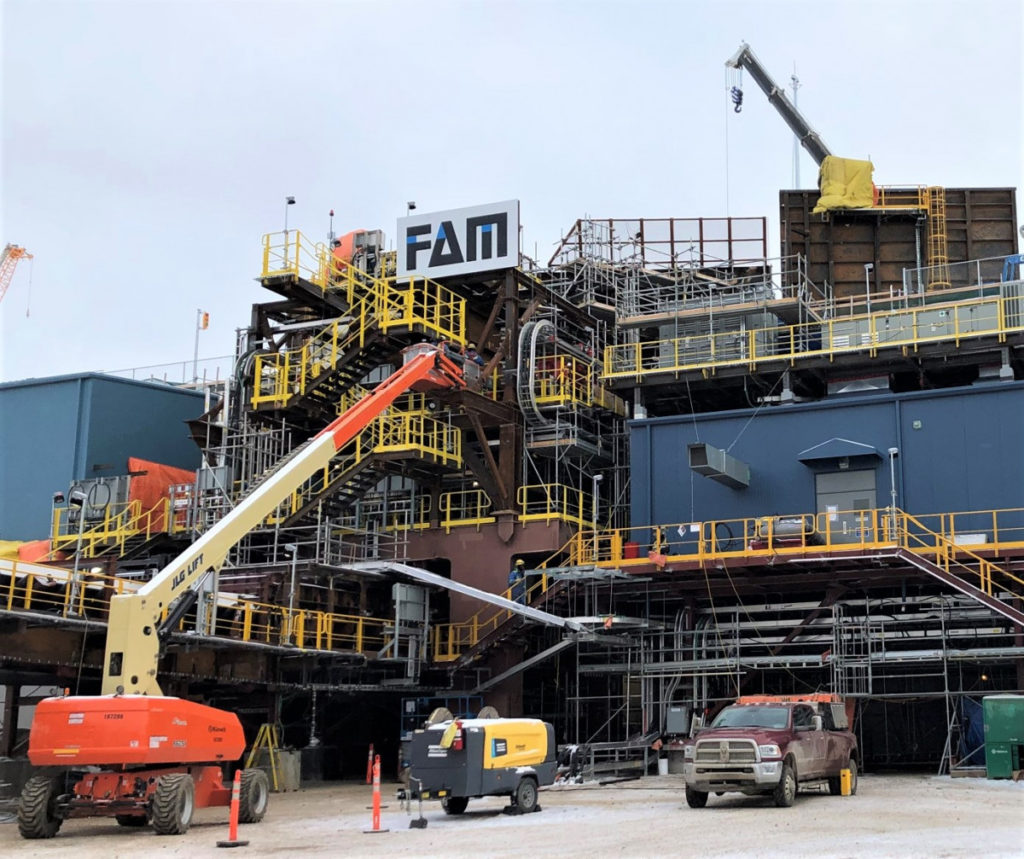Magdeburg, Germany-based FAM recently designed and supplied two hopper and conveyor facilities for the Kearl oil sands mine, part of Imperial Oil. The project, called the Kearl Supplemental Crusher, is located in the Athabasca oil sands region in the province of Alberta in western Canada.
The supplied сrushing plants are among the largest projects implemented by FAM until now. Each plant includes a feed hopper, a sizer, a heavy-duty apron feeder and a stationary belt conveyor. In addition, one of the plants is equipped with an intermediate conveyor, which serves for detection and removal of metal parts. The feed hoppers are loaded with oil sand by dump trucks. The apron feeders move the oil sand, which contains large lumps of rock, from the hoppers to the crushing facilities from where the stationary belt conveyors transport the crushed oil sand for further processing. At the end of 2019, FAM actively supported commissioning activities and received the “Turnover Certificate”.
Elsewhere, as part of its continuous investments in research and technology, Canadian Natural Resources Ltd (CNRL) says it is focusing on improving performance by enhancing its processes while reducing environmental impact. At Horizon, a field pilot was recently completed on an alternative bitumen extraction method called the In-Pit Extraction Process (IPEP). This involves a relocatable, modular extraction plant that processes ore and separates bitumen right in the mine pit. IPEP reduces material transportation by truck, pipeline length and the energy needed to pump material. This process also produces stackable dry tailings, eliminating tailings ponds.
CNRL says it has the potential to reduce production costs by approximately C$2/barrel while substantially reducing tailings management costs and liabilities as well as reducing GHG emissions by up to 40% in bitumen production compared to conventional oil sands mining processing plants by minimising transportation. It will also reduce the footprint of mining operations by eliminating the need for constructing new central ore processing facilities. And it will accelerate reclamation and reduce and avoid fugitive emissions through the production of “dry” stackable tailings. CNRL says results from the initial testing phase for the company’s IPEP pilot have been positive, with excellent recovery rates and evidence of stackable tailings. The company is implementing enhancements to improve overall IPEP operability in 2020.











